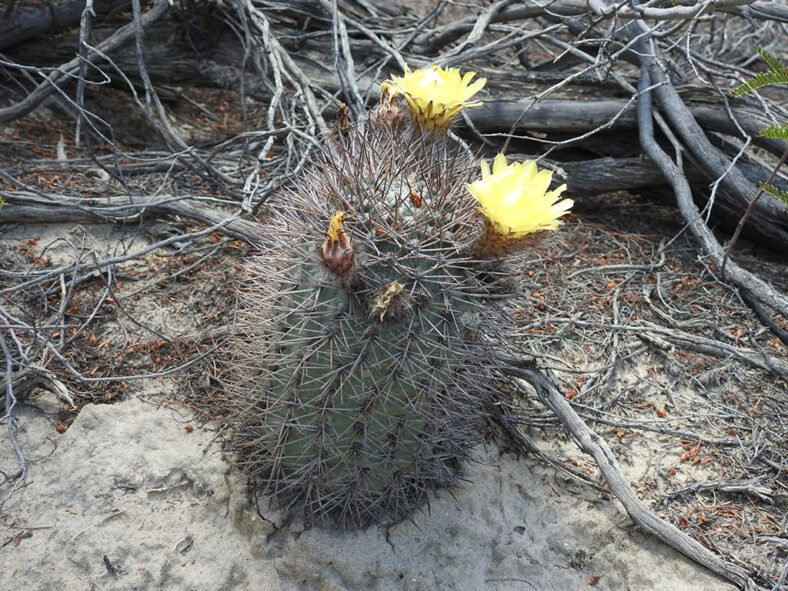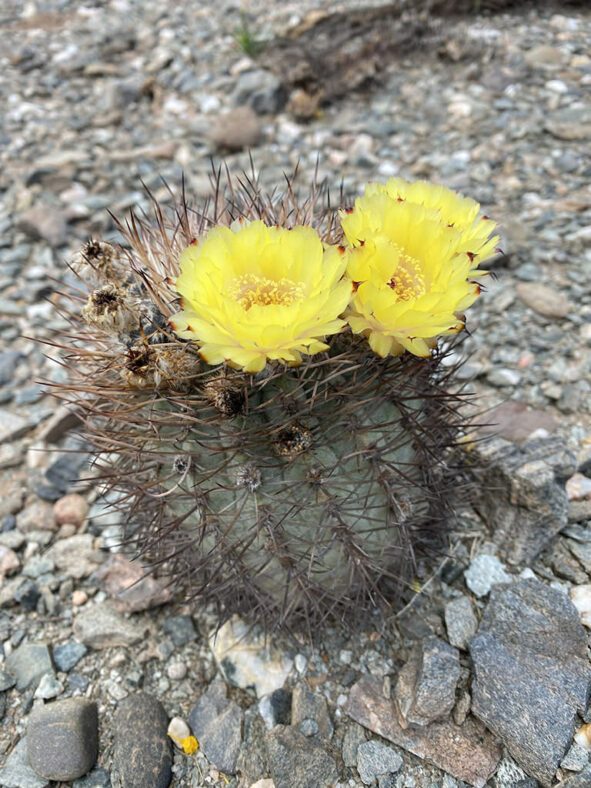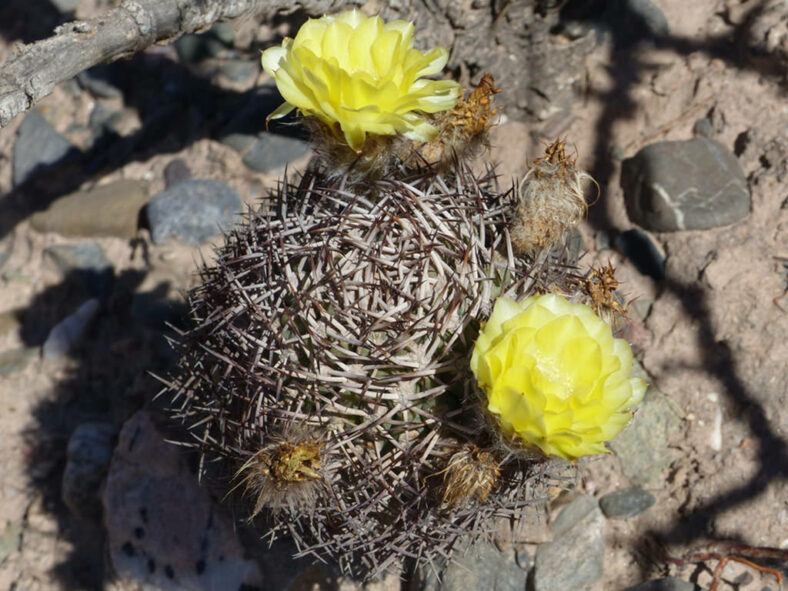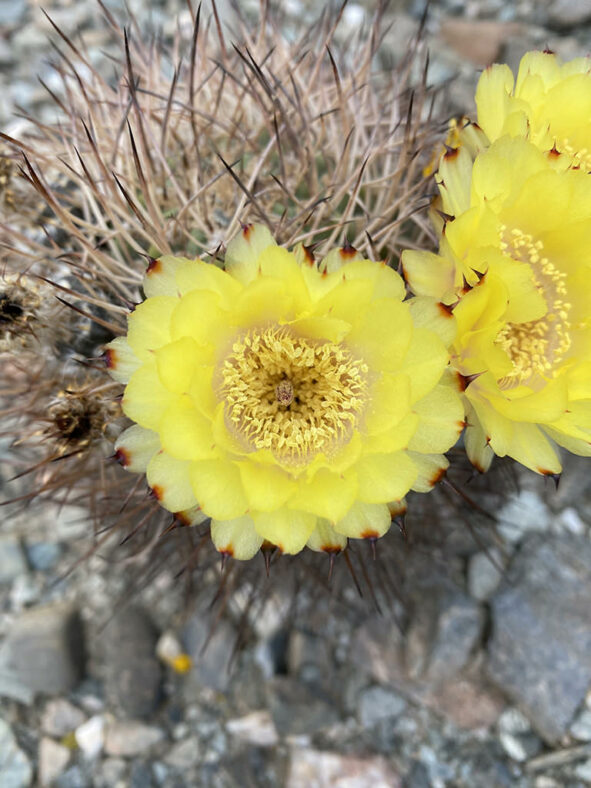Acanthocalycium thionanthum is a highly variable species in size, shape, and color of the stem, spination, and flower color.
Scientific Name
Acanthocalycium thionanthum (Speg.) Backeb.
Synonym(s)
Acanthocalycium thionanthum subsp. thionanthum, Echinocactus thionanthus, Echinopsis thionantha, Lobivia thionantha
Scientific Classification
Family: Cactaceae
Subfamily: Cactoideae
Tribe: Trichocereeae
Genus: Acanthocalycium
Etymology
The specific epithet "thionanthum" (pronounced thee-oh-NAN-thum) means "sulfur yellow flower" and refers to the pale yellow flowers of the type specimens.
Origin
Acanthocalycium thionanthum is native to Argentina. It grows on rocky mountain slopes in Salta, Tucumán, Catamarca, and La Rioja provinces.
Description
Acanthocalycium thionanthum, also known as Echinopsis thionantha, is a small cactus with a spherical to cylindrical stem with 9 to 25 ribs lined with clusters of spines. The stem is usually solitary or with a few basal offshoots and can grow up to 26 inches (65 cm) tall and 10 inches (25 cm) in diameter. The stem color ranges from green to grey-green. The spine-bearing areoles are large and circular, with yellow to brown felt when young but become naked as they age. The spines are awl-like, at first black or light brown, becoming grey or whitish-yellow as they age, and can grow up to 1.2 inches (3 cm) long. Each areole bears 5 to 10 radial and 1 to 4 central spines.
In late spring and early summer, Acanthocalycium thionanthum produces flowers that range from yellow to red, including all the intermediate tones. The flowers are funnel-shaped and can measure up to 2 inches (5 cm) long. They have a floral tube covered in brownish-white bristles and spine-tipped scales.

How to Grow and Care for Acanthocalycium thionanthum
Light: Acanthocalycium thionanthum thrives when exposed to intense sunlight and can be grown in full sun to partial shade. Placing it near a window that receives about 6 hours of direct sun daily is ideal if grown indoors. It is best to move it outdoors in the spring but gradually expose it to direct sunlight to avoid sunburn.
Soil: To promote healthy plant growth, it is important to use sandy or gritty soil with good drainage. Overwatering and poor drainage can cause root rot. A commercial potting mix for cacti will work well, or you can make your own.
Temperature: This cactus can withstand high temperatures, but during the winter, it prefers cooler temperatures. It grows best in USDA Plant Hardiness Zones 9a to 11b, with average minimum winter temperatures ranging from 20 to 50 °F (-6.7 to 10 °C).
Watering: During the growing season, water Acanthocalycium thionanthum thoroughly but allow the soil to completely dry out before watering again. Avoid letting the container sit in a saucer of water. During the winter, suspend watering.
Fertilizing: Feeding this cactus with a water-soluble fertilizer is recommended for optimal growth. However, during the winter, when it goes dormant, fertilizing is not required.
Repotting: Acanthocalycium thionanthum can stay in its pot for years. Repot it only when it has outgrown its current pot or when the soil has degraded, ideally in late winter or early spring. Before repotting, make sure the soil is dry. Choose a slightly larger pot with drainage holes at the bottom.
Propagation: Since it rarely produces offsets, this cactus is usually propagated by seeds. Sow the seeds in late spring or summer.
Learn more at How to Grow and Care for Echinopsis.
Toxicity of Acanthocalycium thionanthum
Acanthocalycium thionanthum is non-toxic to humans or pets. However, keep it away from pets and children as it has sharp spines.
Subspecies of Acanthocalycium thionanthum
Links
- Back to genus Acanthocalycium
- Succupedia: Browse succulents by Scientific Name, Common Name, Genus, Family, USDA Hardiness Zone, Origin, or cacti by Genus
Photo Gallery
Click on a photo to see a larger version.


